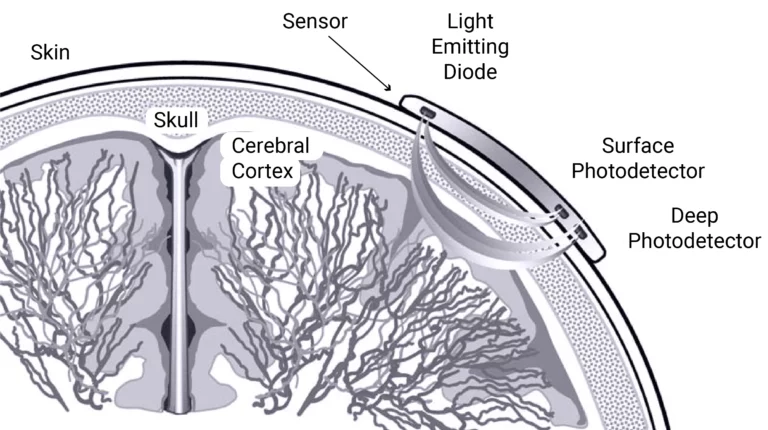How it works
Technology
One of the main reasons this technology has emerged over the recent years is due to the fact that NIRS is a non-invasive imaging procedure.
Although its use and adoption has been increasing in the past years, its applications have been mostly in research rather than clinical settings.
One of main stoppers have been the lack of portability/difficulty of use and the inability to obtain a clean brain signal.
Newmanbrain was born with the mission of solving these challenges creating, after almost 10 years of research & optimization, an easy-to-use & easy-to-wear, portable and multidistance channel fNIRS system that can be used in any clinical/ambulatory settings.
THEIA™ has the potential of changing mental healthcare for good, improving millions of lives.
Science Behind
A robust technology to evaluate your patient’s cognitive status.
THEIA™’s advanced technology allows experts to better diagnose and monitor brain conditions enabling them to obtain unbiased cognitive assessment of their patients brain performance.
This capability together with others (easy to use, price, etc) clearly position THEIA™ to become an effective standard of care in the clinic.
After years of research and development we have published and patented a method to obtain a clean brain signal, solving the biggest challenge in the fNIRS field. This achievement has enabled us to progress into the research of biomarkers for different brain conditions such as Mild Cognitive Impairment (a pre-symptom of dementia caused by Alzheimer’s Disease) and Attention Deficit and Hyperactivity Disorder (ADHD).
AI Analytics
Robust and understandable AI analytics.
Our main mission is to provide brain experts with a reliable, robust and interpretable tool helping them make informed decisions.
Our software processes the information collected during a cognitive test and represents it in real-time graphs. At the end of the test, data is anonymized and
sent to our cloud-based data platform where it gets analyzed in our AI-powered pipeline to finally produce a clinical report that will get sent to the expert.
THEIA™ is an evolving tool with the ability to adapt to new indications, empowering psychologists and neurologists worldwide, to better understand brain conditions.
A cutting-edge software
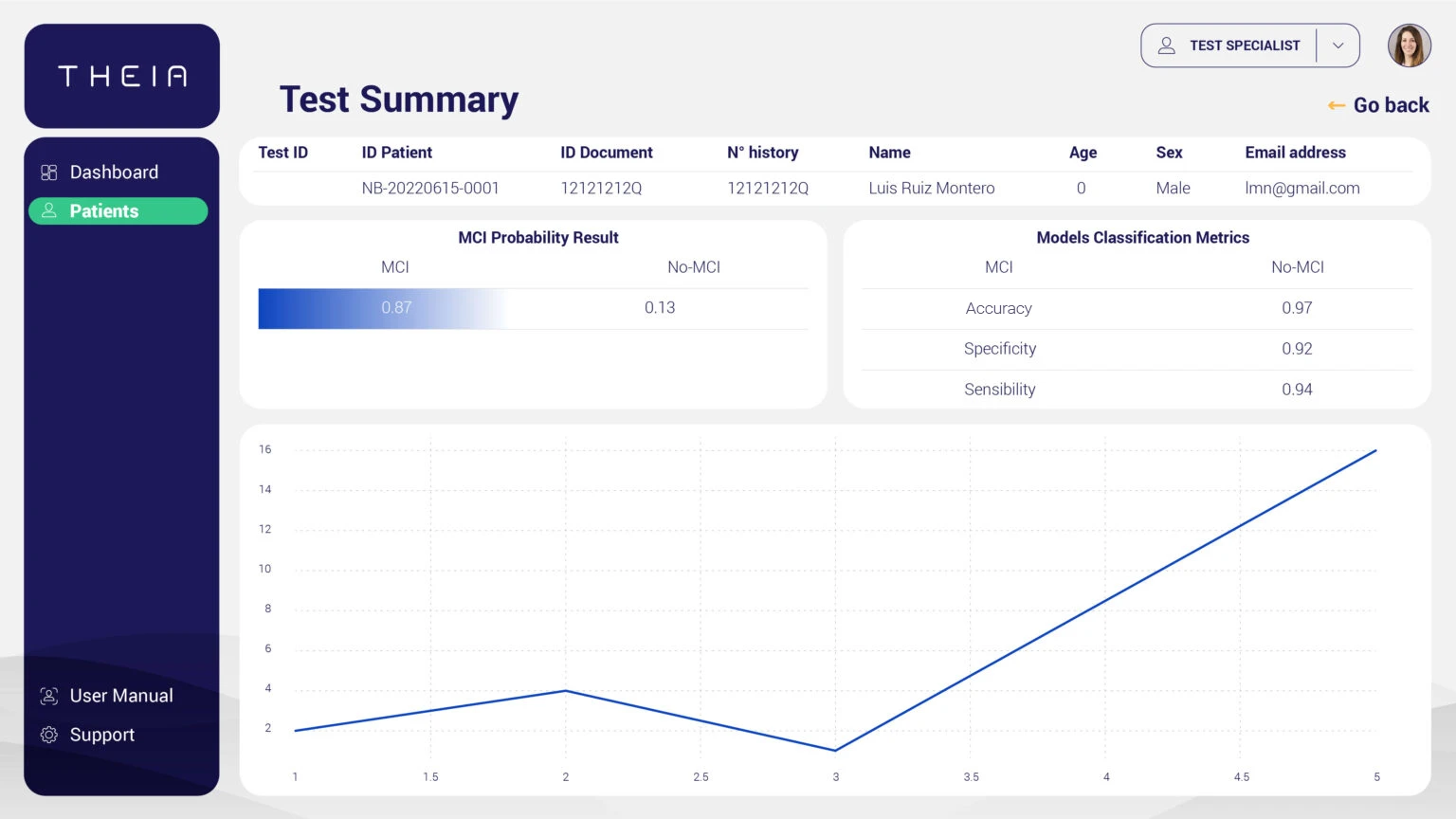
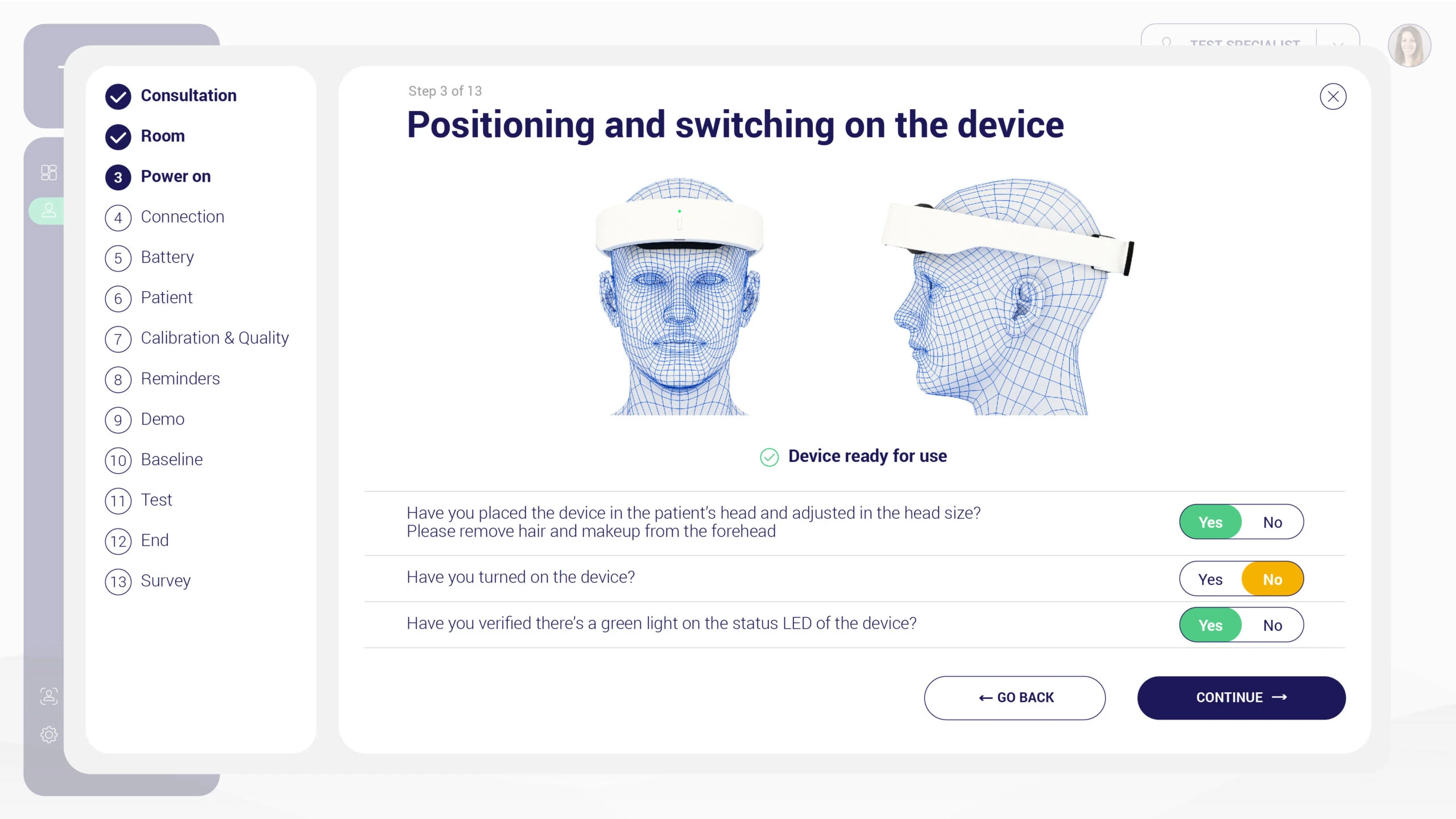
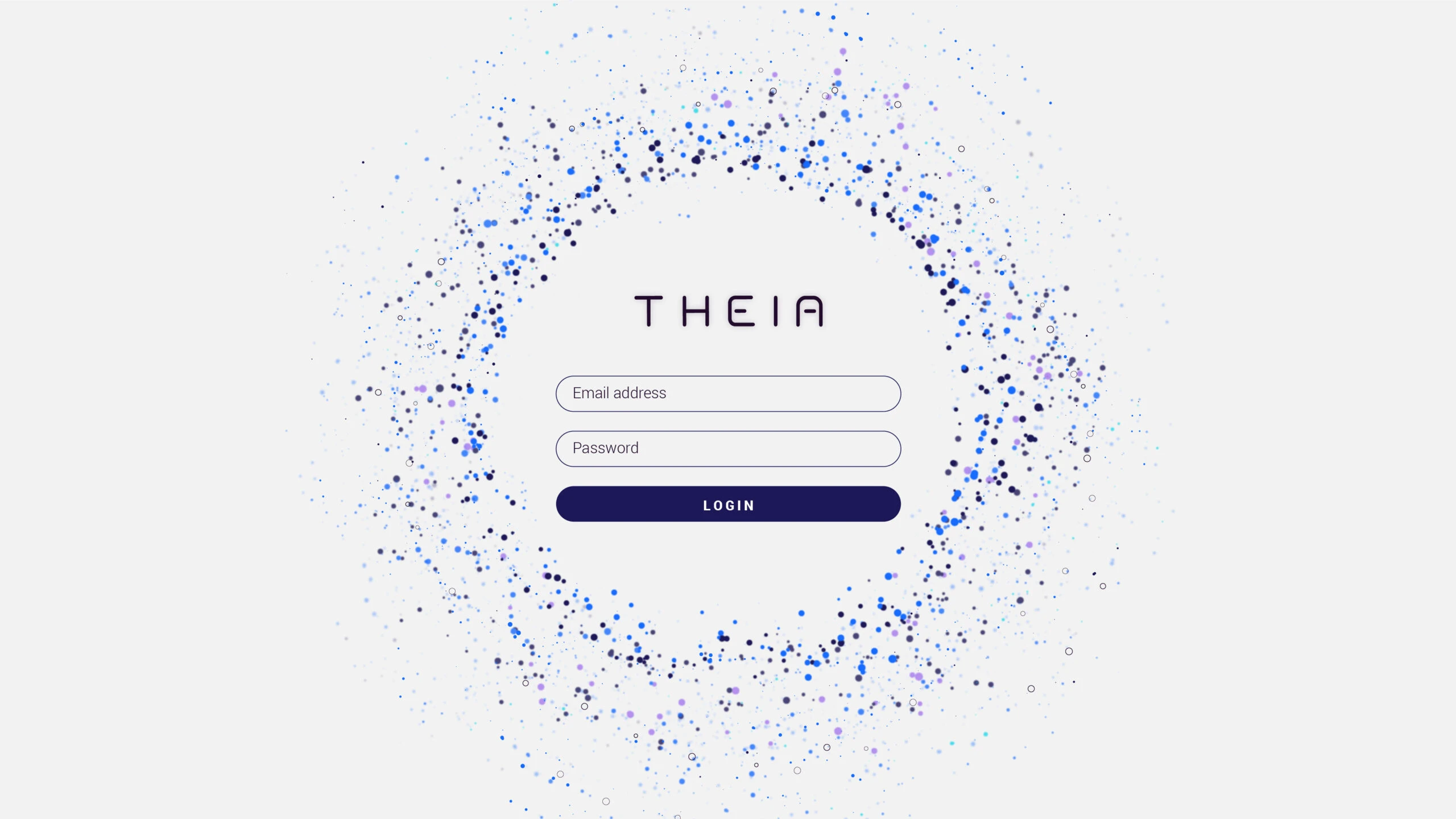
Our brain-performance reports aim to help clinitians make data-based decissions about the monitoring and diagnosis of their patients, heading towards a more targeted and personalized care.
About fNIRS Technology
Biological tissues absorb some NIR light allowing it to penetrate into the tissue before being detected.
The main chromophores (capacity to absorb light at determined wavelengths) of the tissues are water, lipids, melanin and hemoglobin. Water, lipids and melanin have an absorption spectrum that escapes the range of infrared light (between 700nm and 900nm) behaving as if they were transparent.
The only chromophores that absorb in the infrared optical window are oxygenated hemoglobin (HbO) and deoxygenated hemoglobin (HbR). The optimized wavelengths to maximize detection sensitivity are 740nm and 860nm, for HbR and HbO respectively.
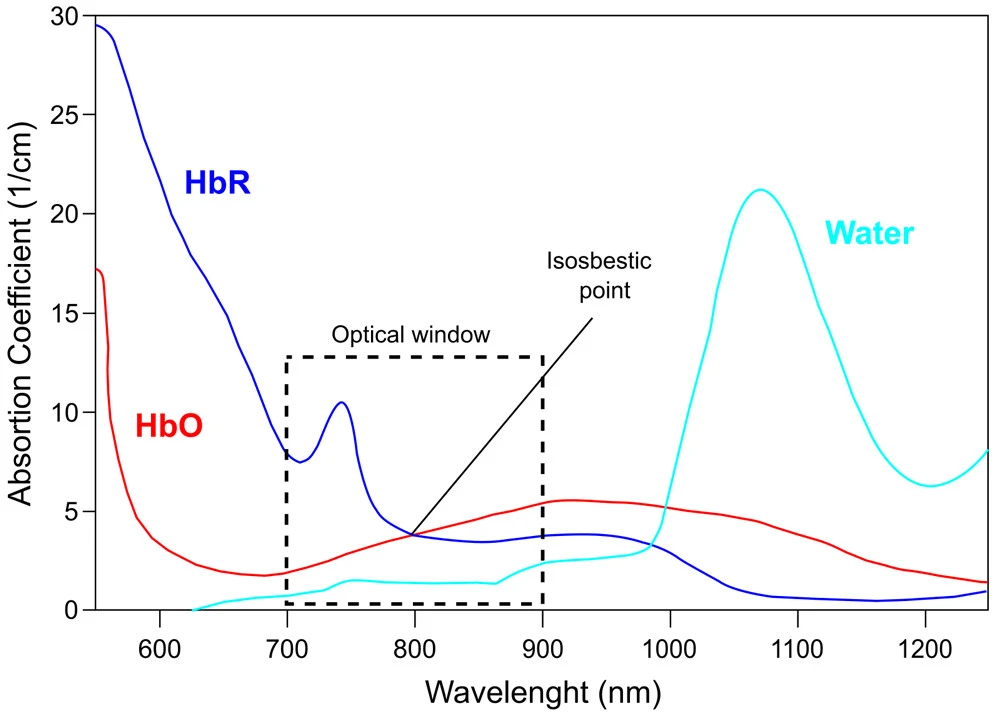
The propagation of light in tissues is governed by the absorption or dispersion of light photons.
The photons follow an optical path that travels the “banana-shaped” tissue from the light source (LEDs) to the detector (D). The depth that this banana-shaped path reaches in the cerebral cortex depends directly on the distance between LED and D.
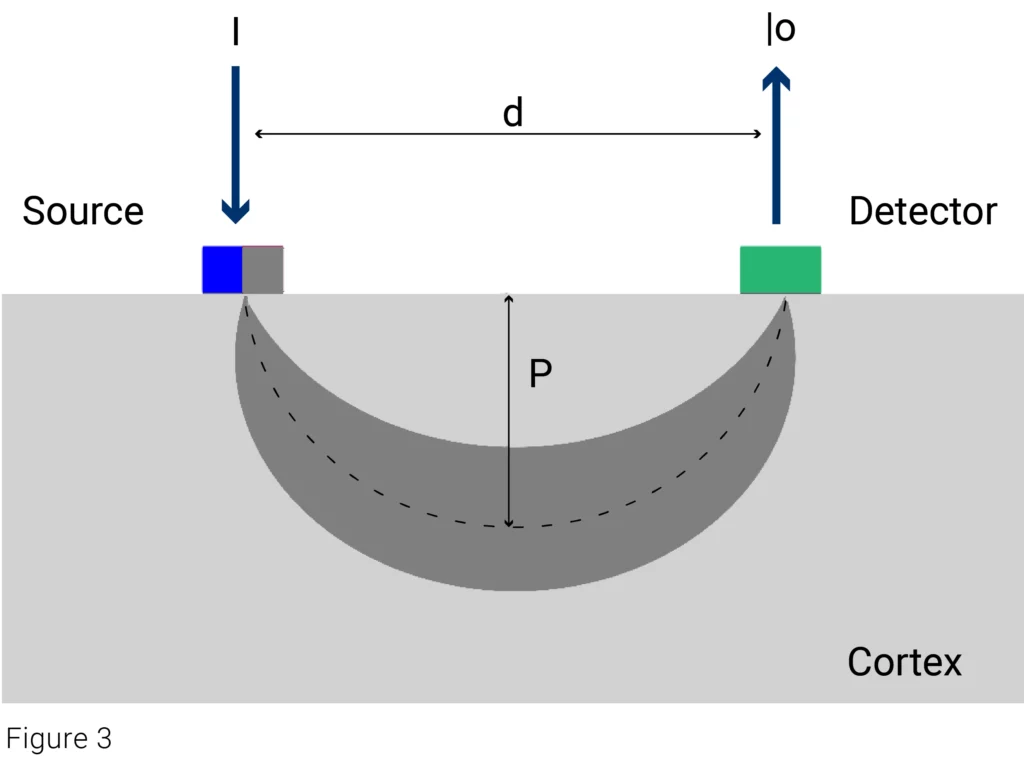
Our fNIR system predicts relative changes in oxy- and deoxy-hemoglobin concentrations as a function of time, thus reflecting the relative changes in neuronal activity in response to a specific stimulus. The relationship between the light absorbed by the tissue and the amount of chromophores possessed by the medium is given by the Law of Lambert-Beer.
A = Absorbance or optical density (OD)
εʎ =Molar extinction coefficient for a wavelength ʎ. It is expressed in cm-1 μM -1.
c = Concentration of the chromophore (micro moles, μM)
d = Distance between light source and detector (centimeters, cm)
Oxygenation = ΔCHbO – ΔCHbR
In this way, the continuous wave fNIR system allows us to measure the optical densities of oxygenated hemoglobin (HbO) and deoxygenated hemoglobin (HbR) with regards to time; Thus, by applying the modified Lambert-Beer law, we can calculate the changes in HbO and HbR concentrations in the tissue of interest, and changes in oxygenation.
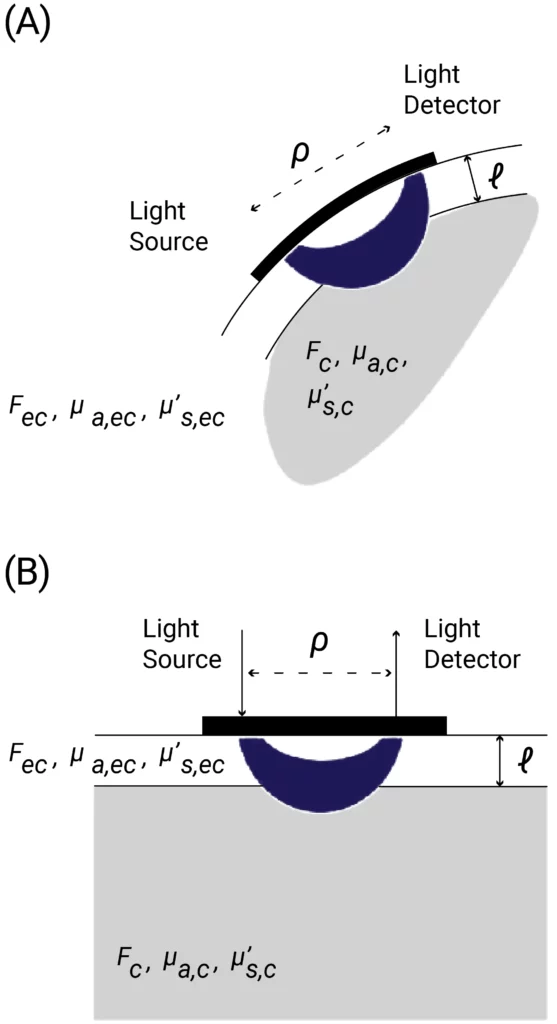
Based on the neurovascular coupling principle, fNIRS aims at detecting the hemodynamic changes evoked by neuronal oxygen consumption. Neuron activity consumes energy derived from glucose metabolism, so an increase in neuronal activity implies an increase in the glucose and oxygen (transported via oxygenated hemoglobin) consumption of the local capillary bed.
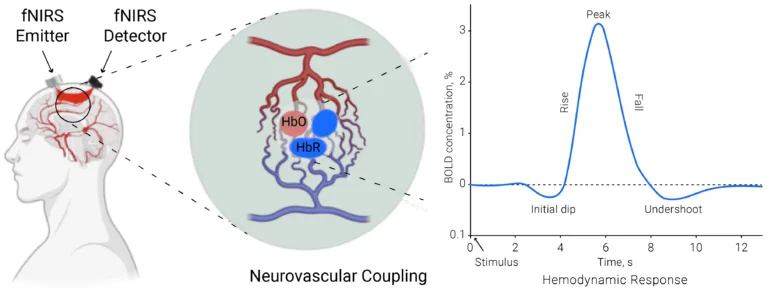
Functional Near-Infrared Spectroscopy (fNIRS), is the use of NIRS (near-infrared spectroscopy) for the purpose of functional neuroimaging. fNIRS is an emerging technology that uses near-infrared light to measure changes in the concentration of oxygenated (HbO) and deoxygenated (HbR) hemoglobin in the cerebral cortex.
